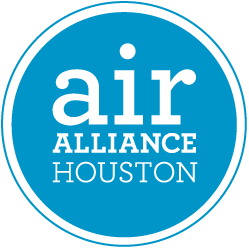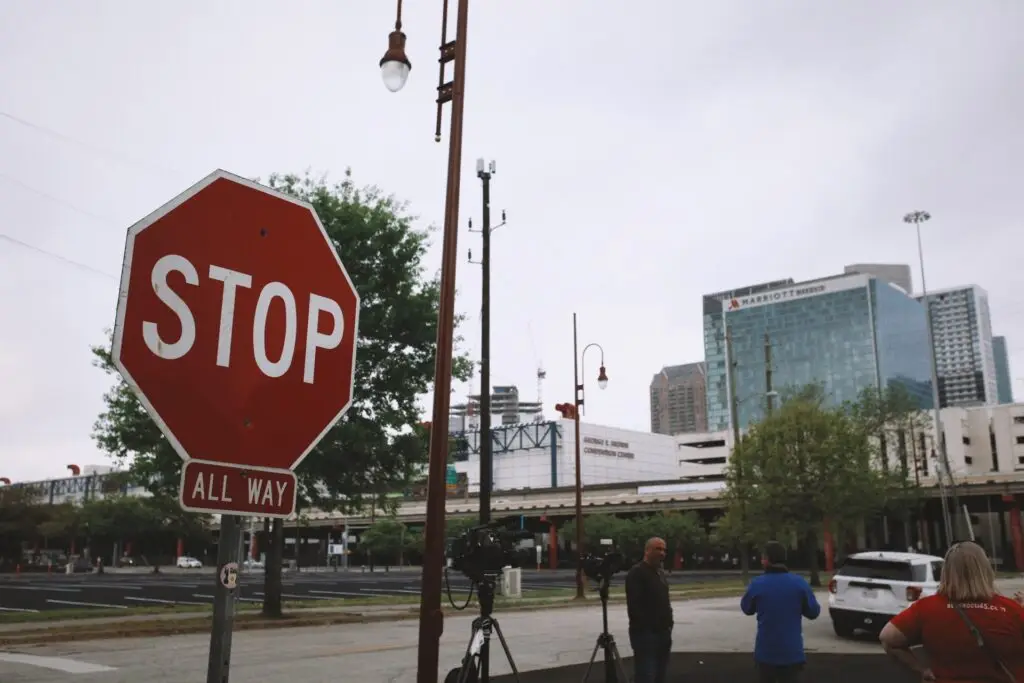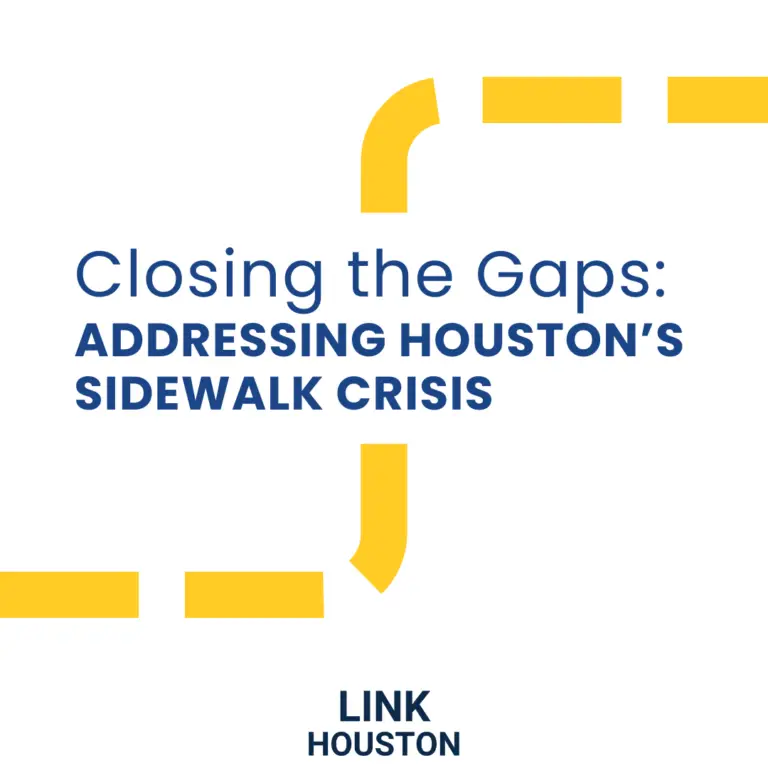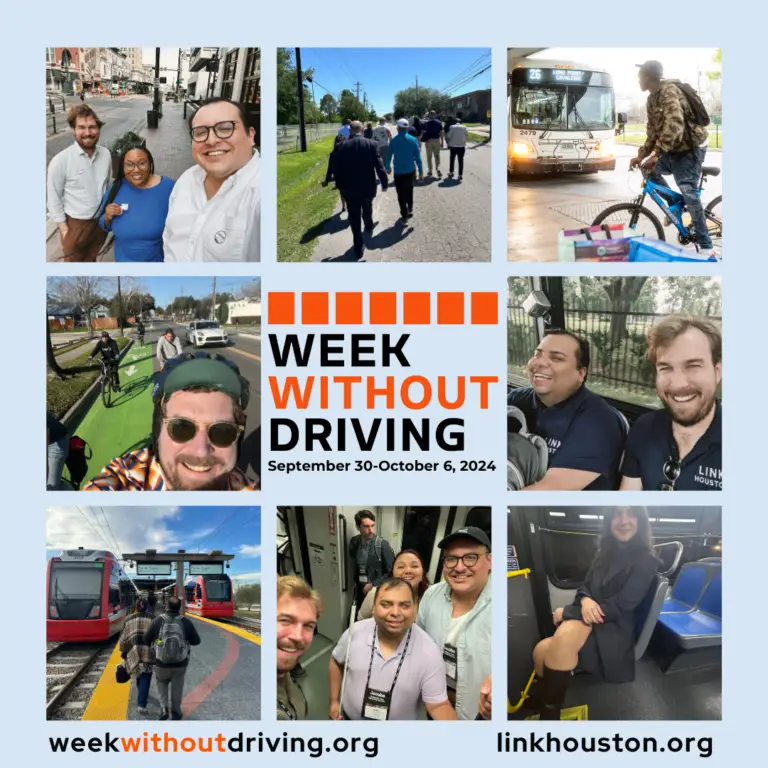I-45 VRA Progress Report:
Summary and Analysis





Introduction
The cornerstone of the federal oversight over the I-45 expansion project is the Voluntary Resolution Agreement (VRA) between the Texas Department of Transportation (TxDOT) and the Federal Highway Administration (FHWA). The VRA outlines actions that TxDOT is required to take to resolve the civil rights complaint filed against the project. The groups that filed civil rights complaints were not included in the VRA process, and the VRA fails to mitigate disproportionate impacts on communities of color, including displacement and the negative health impacts of increased air pollution.
LINK Houston summarized the VRA in March.
As part of the VRA, TxDOT is required to submit progress reports to the FHWA every six months. The first of these progress reports was released in September 2023. We have reviewed this report and included an overview of its content, as well as longer, more in-depth conclusions.
Overview of Report Contents
Overall, the VRA progress report shows that TxDOT has made no significant changes to the project. Starting on Wednesday, December 6, 2023, TxDOT will host six public meetings on implementation of the VRA. Barring a substantial update since this progress report, we should expect more of the same: a massive highway expansion with extensive right-of-way growth to the detriment of the general public.
We are deeply concerned that the VRA Progress Report shows TxDOT continuing longstanding patterns of closed-door decision making that excludes the people who will be most affected by highway expansion. These patterns have resulted in low-income communities and communities of color being sacrificed for more lanes and more congestion.
The required actions of the VRA are organized into eight sections.
-
Reducing the Footprint During Detailed Design
-
-
- TxDOT claims they have reduced the proposed project footprint in a few targeted areas within Segment 3. These reductions have not resulted from any fundamental changes, like reducing the proposed number of lanes, and a map of these reductions was not provided. The reductions happen in the following areas:
- Along I-10 in Fifth Ward and Downtown
- Between Downtown and Fourth Ward
- In Midtown
- There is no reported progress on Segments 1 and 2, which TxDOT says will come in a later phase.
- TxDOT claims they have reduced the proposed project footprint in a few targeted areas within Segment 3. These reductions have not resulted from any fundamental changes, like reducing the proposed number of lanes, and a map of these reductions was not provided. The reductions happen in the following areas:
-
-
Displacements, Relocations, Housing, and Other Community Impacts
-
- TxDOT surveyed 21 non-residential displacements to confirm if the affected parties had received legally required relocation services – none who responded said they needed services. The VRA did not require a similar survey of displaced homeowners and renters.
- TxDOT has re-initiated meetings with the Texas State Affordable Housing Corporation on how to spend the $30 million allocated for housing in the corridor. TxDOT has not provided any specific details about these meetings.
- TxDOT has documented how many displaced residents have received “enhanced relocation services” such as financial counseling.
- TxDOT has entered into nine “occupancy agreements,” which allow residents to remain in their homes and businesses after the sale of their property, but only 3 agreements remain active.
- TxDOT has prepared a written procedure for public engagement titled “Strategies on Meaningful Public Involvement in Transportation Decision-Making.” It lists potential activities like public meetings, workshops, town halls, and community gatherings. However, of the examples of activities actually conducted, none have been advertised to the general public and have instead been held with public agencies and businesses.
- TxDOT has provided a brief outline of the types of materials to be presented at the upcoming December 2023 meetings.
- TxDOT has noted that certain project changes – like adding the Cleburne Street bridge over 59 – will require “re-evaluation” meetings to amend the Final Environmental Impact Statement. TxDOT has not yet provided any specific details on other changes or when those meetings will be held.
Additional Thoughts:
The accessibility and application of the enhanced relocation services remains unclear. The VRA progress report states, “TxDOT will also document all discussions concerning the enhanced relocation services plan with relevant departments.” An appropriate appendix to this section would show the full scope of the relocation services administered, with information about the size and scope of payments, services provided, and the general areas of relocation. A confusing addition is TxDOT’s assurances of support for those “isolated or cut off from the rest of the community.” We hope that the upcoming public meetings will expand on how TxDOT will implement this and how affected neighbors can approach TxDOT for adequate compensation for drastic changes to their neighborhoods.
The update on affordable housing is vague at best. It leaves questions about what exactly TxDOT is offering residents, how TxDOT is calculating Area Median Income (AMI) units, and whether new housing units will actually be affordable to the families displaced by I-45 expansion. Any agreements or grant plans should be transparent and include ample opportunity for affected community members to speak to the barriers to affordability that are often overlooked by developers or planners. Affordable housing produced with this funding must break the pattern of building affordable housing right next to ever-widening freeways: safe, healthy environments should be prioritized for all, regardless of wealth. While the funding for replacement housing is provided by TxDOT, it is being allocated to the Texas State Affordable Housing Corporation for administration. It is not clear from the progress report what accountability and monitoring measures are in place, when this housing will be built, or who it will serve.
In the section on community engagement meetings, TxDOT engages in unfair labeling to create a false sense of community engagement that has not occurred. Throughout this section and Appendix E, TxDOT states that they consider management districts, redevelopment authorities, and Tax Increment Reinvestment Zones (TIRZs) to be “community leaders.” While business leaders are an important voice, they cannot be considered an adequate substitute for meaningful engagement with directly affected Houstonians. In meetings, TxDOT has said that “they will meet with anyone who asks,” but this is simply not good enough. TxDOT has made concerted efforts to meet with groups already aligned with business and corporate interests, but makes no such efforts with those representing the most impacted populations who may not know to engage directly in this process. Putting the onus on disadvantaged parties is a misuse of TxDOT’s power and discourages public discourse – especially considering the robust public opposition to this project that has been dismissed for over a decade. A good faith effort to engage with the community would include proactive efforts to schedule meetings that are accessible to the population and take into consideration time, childcare, and language barriers. The progress report also does not clearly show whether TxDOT’s “engagement techniques” include significantly altering the design based on community feedback. Considering that the final design is far along in the process, especially for Segment 3, we want to more clearly see how those meetings have resulted in significant and meaningful changes to the right-of-way.
-
Flooding
-
-
- TxDOT has conducted several new drainage studies using the updated Atlas 14 flooding data.
-
-
Air Quality Mitigation
-
- TxDOT installed one air monitor in August 2023 near the intersection of Cleburne and Chartres streets. The VRA states that the air monitor must be in place for one year before construction starts.
Additional Thoughts:
TxDOT has only committed to one air monitor per segment in the VRA. At present, the air monitor for Segment 3 is placed at the southern tip of the project at 2014 Cleburne Street. Considering the lack of additional monitors, this location is insufficient as it is located far from Downtown and surrounding neighborhoods like Fifth Ward, Near Northside, and Second Ward where a majority of construction will occur. For a construction area this large and complex, additional monitors will be crucial to understand and mitigate the full range of impacts. Importantly, the VRA states that construction cannot start until one year after the air monitor is in place. This air monitor was placed on August 1, 2023. Although TxDOT has not communicated a clear timeline in this report, it should reflect this one-year requirement. Any ground broken before August 2024 should be considered a direct violation of the VRA.
-
Structural Caps
-
-
- TxDOT has described meetings and design developments for freeway caps. Most of the details TxDOT provides concern the two caps near Wheeler Transit Center. TxDOT will only fund the construction of the concrete caps – any additional elements, such as parks, greenery, or public amenities, will need to come from other public or private funds yet to be identified. The report notes that the City of Houston applied for a Reconnecting Communities grant from the U.S. Department of Transportation to fund these improvements.
-
-
Parks, Open Spaces, Trails, and Pedestrian and Bicycle Facilities.
-
-
- TxDOT has provided many new details about trails along Little White Oak Bayou and the Emancipation National Historic Trail. Similar to the new right-of-way adjustments, TxDOT did not provide a map of these plans.
- TxDOT is looking into alternatives to replace the North Street Connection for pedestrians and bikes.
-
-
Access During Construction
-
- TxDOT has met with three nearby schools to discuss detour options during construction and provided diagrams of potential detour routes.
- TxDOT has met with METRO about maintaining operations at the Wheeler Transit Center.
- TxDOT has prepared a written procedure for coordinating construction detours with the City of Houston and METRO.
- TxDOT is seeking additional federal funds to minimize impacts rather than using their own dedicated funds.
Additional Thoughts:
TxDOT has laid out a process for how they will maintain the public’s access to homes, businesses, schools, workplaces, affected by the project during construction, but access is the bare minimum. This will be a construction project unlike anything Houston has ever seen – detours alone are not going to cut it. Walking, biking, and public transit can be part of the solution, but only if they are improved and expanded before construction starts.
-
Meaningful Access for Persons with Limited English Proficiency (LEP)
-
- TxDOT has developed Standard Operating Procedures (SOP) for how TxDOT staff and contractors in the Environmental Affairs and Right of Way divisions should interact with persons with LEP. The SOPs were finalized in June, 2023 but are not publically available. TxDOT has trained 126 staff and contractors on the new SOPs.
- TxDOT sent a survey to displaced residents and businesses in June, 2023 asking about the sufficiency of language access services. As of the date of the progress report “no surveys [had] been returned requesting additional language services.
- The progress report states that “[s]teps will be taken to identify the potential need to interpreters or translators and plans enacted to ensure proper resources for meaningful public engagement are available to persons with LEP.” There is no information about how these needs will be assessed or how these resources will be provided.
- LEP has been offered but is largely unused. Translation quality is low and is rendered by Google Translate.
Additional Thoughts:
The Limited English Proficiency (LEP) services are mentioned prominently in the VRA in the sections on displacement, public engagement, and the project website. No area offers significant detail into language accessibility requirements. LEP individuals cannot know which services they are entitled to and when their rights are being violated without this information. Translation that is available appears to be done with rudimentary tools like Google Translate. In several instances, the report says that LEP was offered but not requested. A crucial tool mentioned in meeting the LEP requirements is the NHHIP website; translation is only accessible through “web browser settings.” A Google translate plug-in is not sufficient when we are considering translation services to resolve civil rights violations. Moving beyond the insufficiencies with language accessibility, the creation of the website is in and of itself a key point of resolution in the VRA. However, the website is rudimentary and does not even offer a clear timeline on construction for the public. Many of the key facts and repercussions are obscured by jargon or misleading renderings.
Conclusion
In conclusion, this report shows a continuation of many of TxDOT’s discriminatory tactics. The most serious negative impacts of the project are not being mitigated. The upcoming required meetings in December are an opportunity to question the progress of this project. The VRA states that these meetings “will provide an open forum for the community to provide feedback, raise issues, and ask questions about the Project or TxDOT’s compliance with this agreement.” The many questions that linger from this September report must be answered at these meetings. This is the public’s opportunity to judge with their own eyes if all this “progress” results in meaningful improvements.






